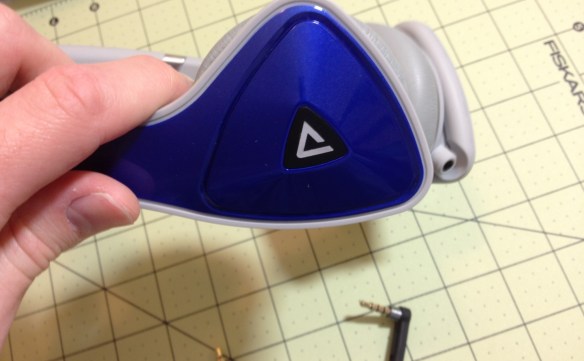I don’t use Bluetooth devices very often, but since I do most of my work on a laptop, a separate, unconnected keyboard is often very convenient. One of the least expensive Bluetooth keyboards on the market is the Sparin Bluetooth mini keyboard. How well does it work?

(Disclaimer: I did not pick up this item new, and I have done almost a year of testing on this product because I got it second hand. So perhaps my review is slightly off what it would be if I bought the product new.)

While ostensibly a keyboard for any Bluetooth-compatible device, the design, coloring, layout, and icons on the keys are very similar to a Mac keyboard. The iconography especially is almost identical. The entire board is molded in a white plastic that is painted a silver-ish color on the top. The white keys (with grey lettering) set on top of this look quite nice, and it’s hard to tell that the board is not metal at first glance. The number, size, and layout of the key is identical to a Mac(book pro 13”), coming in at about 11” by 4¾”, not exactly the most portable, but pretty comfortable to use. On the back there is a small 1” by ½” battery compartment (2AAA) that runs the length of the device, and is placed as such to give it a nice slant when resting on a flat surface. An on/off switch, a Bluetooth connect button, and 4 rubber pads are the only other things adorning the fairly blank underside.

As for the typing performance, it feels very much like a Mac keyboard, but with a general feeling of lower quality. The keys are around the same height and shape (that is to say, pretty flat) but they are rougher on the top, less smooth on the press, and sometimes the presses don’t register. It also feels a bit small, and my hands do start to feeling a bit cramped when using it for long periods (like more than a couple hundred words at a time)(and the “turn off computer button” is way too easy to accidentally hit).

Connecting to the device is pretty easy, as is swapping devices. Since it is just a Bluetooth connection, the compatibility is good for most devices, but the Mac keyboard layout hinders that a bit. Connectivity is also a problem at times, after a certain period (I have no idea how long: it seems random at times) of being unused the device will deem no one is using it and shut off. This problem is usually solved by pressing a few keys and the keyboard will reconnect, except when it doesn’t. Sometimes, even after only being idle a few minutes it seems, the device will need to be turned off and on in order to reconnect. This seems to get more frequent the more drained the batteries are (which makes sense) but it isn’t an exclusively late-battery problem. But the battery life itself is fairly decent, surviving months of use as a primary computer keyboard.
In the end I’d probably say it’s worth the price (or the less than half of that I paid for it used) but it does have some problems and idiosyncrasies that need some getting used to. It’s far from the best or most portable Bluetooth keyboard out there, but it’s functional and simple (and it’s the one I’m sticking with for now, I’ve been typing this whole review with it).






